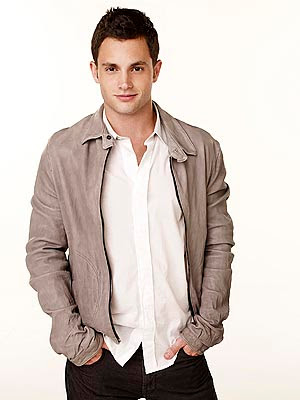 Howard Hawks is one of the greatest American movie directors of all time. Adept at all film genres, Hawks excelled at fast-paced screwball comedies like Twentieth Century, Bringing up Baby, and His Girl Friday.
Howard Hawks is one of the greatest American movie directors of all time. Adept at all film genres, Hawks excelled at fast-paced screwball comedies like Twentieth Century, Bringing up Baby, and His Girl Friday.His Girl Friday was a reworking of the Ben Hecht Charles MacArthur classic The Front Page. By making Hildy Johnson a woman and the ex-wife of editor Walter Burns, Hawks thought the dialogue was funnier and added a dimension that The Front Page lacked. This was a pretty risky decision at the time, since The Front Page was considered a classic not to be messed with.
 Hawks's risk paid off and the casting of Cary Grant as Walter Burns and Rosalind Russell as Hildy Johnson was inspired. In Grant's capable hands, Walter Burns is a more complex character than he was in the original. In The Front Page, Burns is a total cad. He wants to lure Hildy back to the newspaper business for completely selfish motives. In His Girl Friday, Walter wants Hildy back at the paper because she's a great reporter, but also because he's still in love with her. Russell's Hildy is the perfect Hawksian heroine: self-assured, smart, and independent. It's hard to believe that Russell was the eighth choice to play Hildy Johnson. Jean Arthur, Katherine Hepburn, Claudette Colbert, Irene Dunne, Margaret Sullivan, and Ginger Rogers all turned the role down. Hawks wanted Carole Lombard, who he directed to stardom in Twentieth Century, but she was too expensive, working as an independent actress. Joan Crawford was even considered for the role.
Hawks's risk paid off and the casting of Cary Grant as Walter Burns and Rosalind Russell as Hildy Johnson was inspired. In Grant's capable hands, Walter Burns is a more complex character than he was in the original. In The Front Page, Burns is a total cad. He wants to lure Hildy back to the newspaper business for completely selfish motives. In His Girl Friday, Walter wants Hildy back at the paper because she's a great reporter, but also because he's still in love with her. Russell's Hildy is the perfect Hawksian heroine: self-assured, smart, and independent. It's hard to believe that Russell was the eighth choice to play Hildy Johnson. Jean Arthur, Katherine Hepburn, Claudette Colbert, Irene Dunne, Margaret Sullivan, and Ginger Rogers all turned the role down. Hawks wanted Carole Lombard, who he directed to stardom in Twentieth Century, but she was too expensive, working as an independent actress. Joan Crawford was even considered for the role. Russell was so put off by being eighth on the list (ninth if you count Crawford) that the first time she met Hawks, she showed up with wet hair. She soon discovered that Hawks wanted her to succeed in the role and after a few rough patches early in the shooting, she quickly gained confidence, going toe-to-toe with the more experienced Grant (His Girl Friday was his third film with Hawks).
Russell was so put off by being eighth on the list (ninth if you count Crawford) that the first time she met Hawks, she showed up with wet hair. She soon discovered that Hawks wanted her to succeed in the role and after a few rough patches early in the shooting, she quickly gained confidence, going toe-to-toe with the more experienced Grant (His Girl Friday was his third film with Hawks).As the story goes, Hildy quits the paper to marry dependable, but dull, insurance salesman Bruce Baldwin (Ralph Bellamy). Tired of being a "newspaperman," Hildy says she wants a normal life of domesticity, but Walter suspects she's fooling herself, so he plots to lure her back to the paper and into his arms.
 Hawks was never one for depicting domestic married life on the screen, preferring to portray the chase and the buildup to marriage, and no one showcased the chase better than Hawks. Since Hawks admired smart, funny women, his heroines are never given short shrift on film. From camera angles to screen time, Grant and Russell are treated equally. One of the reasons Hawks's films still seem so fresh and contemporary is due to his strong female characterizations.
Hawks was never one for depicting domestic married life on the screen, preferring to portray the chase and the buildup to marriage, and no one showcased the chase better than Hawks. Since Hawks admired smart, funny women, his heroines are never given short shrift on film. From camera angles to screen time, Grant and Russell are treated equally. One of the reasons Hawks's films still seem so fresh and contemporary is due to his strong female characterizations.Howard Hawks directed some of the greatest films of all time and His Girl Friday is one of his best.
His Girl Friday opened at Radio City Music Hall on January 11, 1940.







